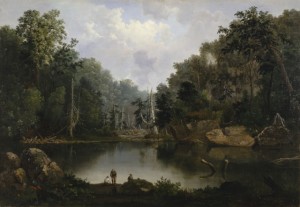- To Save Endangered Tortoises, Conservationists Deface Their Shells : NPR 022714
They’re a quiet bunch, the hundreds of animals residing at the well-guarded botanical oasis in California’s Ojai Valley. They’ve been brought to the Turtle Conservancy from countries around the world, like modern-day refugees escaping certain and persistent perils. | For years, the conservancy has worked on the front lines of the battle against smugglers, including on behalf of the ploughshare tortoise from Madagascar. The species is among the rarest tortoises on Earth; experts believe that only a few hundred still exist. Their rarity, along with a golden shell, has laid a high price on their head. | "Turtles and tortoises are arguably the most threatened group of animals on the planet," says Eric Goode, founder of the . "Out of the 330 species of turtles and tortoises, over half of them are threatened with extinction."
- Turtle Conservancy
The Turtle Conservancy continues to flourish and is constantly expanding both its in situ and ex situ efforts to save the world’s remaining populations of turtles and tortoises employing a creative combination of both time-tested and unique conservation strategies. The TC has active in situ projects in China, Madagascar, Guyana, India, Mexico, Nicaragua, Pakistan, South Africa, and the United States.
- This Freeloading Bird Brings Help — And The Help Smells Gross : NPR 032014
The great spotted cuckoo is a parasitic bird that plops its eggs in nests of other birds, so others can care for its chicks. Those chicks might aid the caretaker bird by helping to repel predators. [Cuckoo nestlings excrete a foul-smelling fluid that smells] "So bad that it might protect the nest by repelling predators. [Daniela Canestrari at the University of Oviedo in Spain] tested this idea by putting the noxious substance into chicken meat and then trying to feed it to feral cats. In the journal Science, they report that the cats wouldn’t touch the stuff. The chemical analysis showed that it contains all kinds of caustic compounds."
- Giant Lizards Rise In Fla. — And They've Got Quite An Appetite : NPR 031814
It’s fight against invasive species every day in Florida. Burmese pythons and Cuban tree frogs are some of the animals that moved in uninvited. There’s also this giant lizard, the Argentine black and white tegu. Tegus are coming out of hibernation right now and they’re hungry. They eat eggs of native animals that conservationists want to protect. | The tegus are native to South America, but now have breeding populations in three Florida counties. They’re kept as pets but some escape or might be set loose when they get too big.
About the Ghost Turtles
150 years after Robert Duncanson painted this luminist scene on the Little Miami River, I stood in the same spot and saw a soft-shelled turtle sunning on a snag. It slipped silently into the water when it heard me. That’s when I knew past is present and destiny, too. That’s when my vision of the Ghost Turtles began. Read more
Ecology of the Senses
 Returning to Lake Superior year after year like a migrating loon, I’ve learned the other side of a slow, uncertain process that could be called “going blind.” With the lake as my teacher, I know what lies on the other side. I call it letting go of sight. Read more.
Returning to Lake Superior year after year like a migrating loon, I’ve learned the other side of a slow, uncertain process that could be called “going blind.” With the lake as my teacher, I know what lies on the other side. I call it letting go of sight. Read more.Prayer at Big Creek
![Sandhill cranes land on Platte River sandbar roosts west of Rowe Sanctuary’s Iain Nicolson Audubon Center southwest of Gibbon, Nebraska. [Photo by Lori Porter| Kearney Hub]](https://www.ghostturtles.com/wp-content/uploads/2015/03/sandhill_cranes_kearneyhub_032015-300x225.jpg) At the threshold of consciousness, as I slipped back and forth between two worlds, I put my mind in the best place I could imagine, a marsh on Lake Erie called Big Creek. I knew I’d find cranes waiting for me. I cannot say whether I prayed for them, or to them, or with them. The cant of words doesn’t matter. I believe in the still, small voice. I believe what the poet Yehuda Amichai said. Gods come and go. Prayer is eternal. Read more
At the threshold of consciousness, as I slipped back and forth between two worlds, I put my mind in the best place I could imagine, a marsh on Lake Erie called Big Creek. I knew I’d find cranes waiting for me. I cannot say whether I prayed for them, or to them, or with them. The cant of words doesn’t matter. I believe in the still, small voice. I believe what the poet Yehuda Amichai said. Gods come and go. Prayer is eternal. Read moreFreedom to Read
![An endangered Whooping crane takes flight. Yhe large bird has a 7-foot wingspan. It is all white except for black wing tips and face markings. In this photo its long neck stretches forward; its wings sweep upward; and its black legs trail straight behind it. [Source: International Crane Foundation]](https://www.ghostturtles.com/wp-content/uploads/2023/03/Whooping-crane-eastern-ICF-080622-300x157.jpg) Whenever I hear sanctimonious pronouncements about woke, parental rights, and banning books, I think of Whooping cranes. In my family, the gawky, audacious, elusive and endangered birds are synonymous with our values about the First Amendment and the freedom to read. Read more.
Whenever I hear sanctimonious pronouncements about woke, parental rights, and banning books, I think of Whooping cranes. In my family, the gawky, audacious, elusive and endangered birds are synonymous with our values about the First Amendment and the freedom to read. Read more.Sister, Teacher, Pathfinder
 A guidance counselor in high school told my sister Diana, “With your eye problems you will never make it in college. Just forget about it. Get married. Raise a family.” That advice only deepened her determination. She did it all in due time, in her own way –college, marriage, family. She became a guidance counselor herself. She certainly was the most important guide and pathfinder in my life. Read more.
A guidance counselor in high school told my sister Diana, “With your eye problems you will never make it in college. Just forget about it. Get married. Raise a family.” That advice only deepened her determination. She did it all in due time, in her own way –college, marriage, family. She became a guidance counselor herself. She certainly was the most important guide and pathfinder in my life. Read more.Flaneur & Bouquiniste
![Mark Willis peruses a 1745 volume by Voltaire at a bouquiniste book stall on the banks of the Seine in Paris. He wears a brown leather jacket and checkered flat cap. He holds the open book in his hands. Rows of old books are seen on shelves behind him. [2005 photo by Ms. Modigliani]](https://www.ghostturtles.com/wp-content/uploads/2023/03/mw_bouquiniste_05-300x225.jpg) I remember the book I held in my hands that day. I remember the feel of its time-warped, water-stained pages. I remember its murky, moldy river smell, call it the book’s bouquet, suggesting years of storage on the banks of the Seine. Had I bought it then, I could feel and smell it now and know it from a hundred other books in my library. Read more.
I remember the book I held in my hands that day. I remember the feel of its time-warped, water-stained pages. I remember its murky, moldy river smell, call it the book’s bouquet, suggesting years of storage on the banks of the Seine. Had I bought it then, I could feel and smell it now and know it from a hundred other books in my library. Read more.R & K: A Rant
 Marjorie Taylor Green auditioned for R&K’s Authoritarian It Girl at the 2023 State of the Union address. She and her Republican colleagues yelled like Tarzan swinging through the trees as they jeered and booed the President’s speech. Read Rants & Kisses.
Marjorie Taylor Green auditioned for R&K’s Authoritarian It Girl at the 2023 State of the Union address. She and her Republican colleagues yelled like Tarzan swinging through the trees as they jeered and booed the President’s speech. Read Rants & Kisses.R & K: A Kiss
 Songs by Burt Bacharach and Hal David. Singers like Dione Warwick and Dusty Springfield. What Do You Get When You Fall in Love? The Look of Love. I Say a Little Prayer. I sit in the car’s back seat and listen. I’m glad it’s dark. I’d be embarrassed if anyone could see the dreamy look on my face. Read Rants & Kisses.
Songs by Burt Bacharach and Hal David. Singers like Dione Warwick and Dusty Springfield. What Do You Get When You Fall in Love? The Look of Love. I Say a Little Prayer. I sit in the car’s back seat and listen. I’m glad it’s dark. I’d be embarrassed if anyone could see the dreamy look on my face. Read Rants & Kisses.

